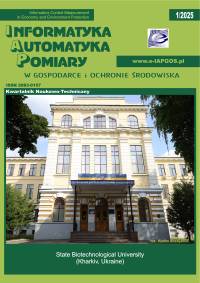PRZEGLĄD PODEJŚĆ DO MODELOWANIA PRZEWIDYWAŃ ZWIĄZANYCH Z WITRYNAMI INTERNETOWYMI
Patryk Mauer
patryk.mauer@student.po.edu.plPolitechnika Opolska (Polska)
https://orcid.org/0000-0003-4173-0424
Abstrakt
Ten artykuł naukowy przeprowadza analizę różnorodnych metod modelowania stosowanych do prognozowania aspektów witryn internetowych, zapewniając przegląd tej dynamicznie rozwijającej się dziedziny. Podczas gdy Internet nieustannie się powiększa, nabiera wagi potrzeba stosowania automatycznych metod do klasyfikacji nowo powstających stron internetowych. Zbadano metody zastosowane w szerokim zakresie przewidywań, obejmujących kategoryzację witryn internetowych, prognozowanie zachowań nawigacyjnych użytkowników online, identyfikację stron o złośliwym charakterze, wykrywanie fałszywych informacji, rozpoznawanie prób phishingu oraz ocenę estetycznych aspektów witryn internetowych.
Słowa kluczowe:
uczenie maszynowe, witryny internetowe, metody przewidywania, algorytmy klasyfikacjiBibliografia
Bozarth L., Budak C.: Lay it Out: Detecting Fake News Publishers through Website Structure Data, 2019 [http://doi.org/10.2139/ssrn.3419781].
DOI: https://doi.org/10.2139/ssrn.3419781
Google Scholar
Cohen D. et al.: Website categorization via design attribute learning. Computers & Security 107, 2021, 102312 [http://doi.org/10.1016/j.cose.2021.102312].
DOI: https://doi.org/10.1016/j.cose.2021.102312
Google Scholar
Delitzas A., Chatzidimitriou K. C., Symeonidis A. L.: Calista: A deep learning-based system for understanding and evaluating website aesthetics. International Journal of Human-Computer Studies 175, 2023, 103019.
DOI: https://doi.org/10.1016/j.ijhcs.2023.103019
Google Scholar
How many websites are there in the world? – A Daily Calculator [https://www.statsfind.com/how-many-websites-are-there-in-the-world-a-daily-calculator/] (available: 13.02.2024).
Google Scholar
Jindal H., Sardana N.: Web navigation prediction based on dynamic threshold heuristics. Journal of King Saud University–Computer and Information Sciences 34(6), 2022, Part A, 2820–2830 [http://doi.org/10.1016/j.jksuci.2020.03.004].
DOI: https://doi.org/10.1016/j.jksuci.2020.03.004
Google Scholar
Korkmaz M. et al.: Deep neural network based phishing classification on a high-risk URL dataset. International Conference on Soft Computing and Pattern Recognition. Springer International Publishing, Cham, 2020.
DOI: https://doi.org/10.1007/978-3-030-73689-7_62
Google Scholar
Matošević G., Dobša J., Mladenić D.: Using Machine Learning for Web Page Classification in Search Engine Optimization. Future Internet. 13(9), 2021.
DOI: https://doi.org/10.3390/fi13010009
Google Scholar
Nandanwar A., Choudhary J.: Web Page Categorization based on Images as Multimedia Visual Feature using Deep Convolution Neural Network, 2020, 619–625.
Google Scholar
Opara C., Chen Y., Wei B.: Look before you leap: Detecting phishing web pages by exploiting raw URL and HTML characteristics. Expert Systems with Applications 236, 2024, 21183 [http://doi.org/10.1016/j.eswa.2023.121183].
DOI: https://doi.org/10.1016/j.eswa.2023.121183
Google Scholar
Sakar C. O. et al.: Real-time prediction of online shoppers’ purchasing intention using multilayer perceptron and LSTM recurrent neural networks. Neural Comput & Applic 31, 2019, 6893–6908.
DOI: https://doi.org/10.1007/s00521-018-3523-0
Google Scholar
Shaffi S. S., Muthulakshmi I.: Search Engine Optimization by using Machine Learning for Web Page Classification. International Conference on Augmented Intelligence and Sustainable Systems – ICAISS, 2022, 342–349.
DOI: https://doi.org/10.1109/ICAISS55157.2022.10011123
Google Scholar
Autorzy
Patryk Mauerpatryk.mauer@student.po.edu.pl
Politechnika Opolska Polska
https://orcid.org/0000-0003-4173-0424
Statystyki
Abstract views: 121PDF downloads: 124










